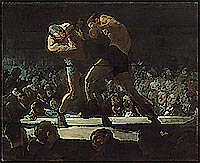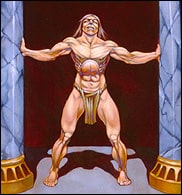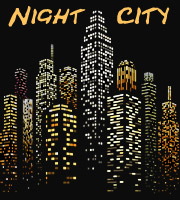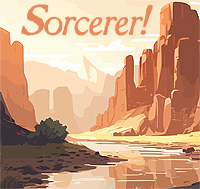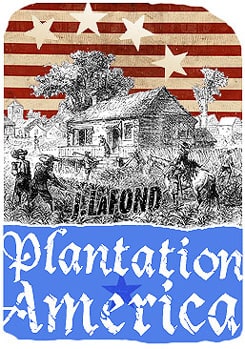Jasper and his companion—carrying a sack with two swords in it and other goods—have acquired a guide who seem to have been a non-Indian Christian named Benteel, yet makes moccasins in a half hour, “could speak the Indian language well,” and appears more and more to be a mixed-breed frontiersman. They have some dealing with Indians on the Pennsylvania New Jersey border on the eve of the coming of the Quaker potentate William Penn. It is clear that the Dutch protected the Dutch and Swedes from the Quaker machinations. The English would do the opposite. At least one Dutch indentured servant from this region would father a son that would become an Indian leader second to none. He will be discussed in Paleface.
“The Quakers have endeavored to break up the Dutch and others not of their religion, who have lived of old on the east side of the river, but resist them, and are sustained by the authorities. How far this may be carried, and what may be the result, time will show. The Indians hate the Quakers very much on account of their deceit and covetousness, and say they are not Englishmen, always distinguishing them from all other Englishmen, as is also done by almost all other persons. The Indians say "they are not Christians, they are like ourselves…"
Along Millstone Creek
“After we had gone four or five miles, we saw the houses [1] of the Indians on the right, and went to them partly for the purpose of drying ourselves, for though the rain seemed at times to abate it still continued, and partly to inquire the best way to go, in order to cross the large creek. We entered their dwelling where we dried ourselves and breakfasted a mouthful out of our travelling sacks. We presented the Indians some fishhooks which pleased them. As to crossing the large creek, they said it was not advisable to wade over, as the water was as high as our shoulders or higher, as one of them showed us, and the current was so swift as to render it impassable. He said that not far from their house lived a sackemaker [2]who had in the creek a canoe with which he had set a man across the day before, who had a horse which he swam over; but the sackemaker was not pleased at his doing so without his permission. We promised him a guilder to take us to the sackemaker.”
“While we were in this house a little naked child fell from its mother's lap, and received a cut in its head, whereupon all who sat around that fire, and belonged to that household, began to cry, husband and wife, young and old, and scream more than the child, and as if they themselves had broken their arms or legs. In another corner of this house there sat around a fire, forming another household, a party whose faces were entirely blackened, who observed a gloomy silence and looked very singular. They were in mourning for a deceased friend.”
“The Indian, having made himself ready, took both our sacks together and tied them on his back for the purpose of carrying them, which did not suit us badly, as we were very tired. He did that without our asking him, and conducted us in a direction more southeasterly to their king or sackemaker, who lived two or three miles from there. On arriving there, they immediately offered us some boiled beans in a calabash, cooked without salt or grease, though they brought us our own kind of spoons to take them out with. It was the queen who did this, who was dressed more than the others. She gave us also a piece of their bread, that is, pounded maize kneaded into a cake and baked under the ashes. We ate some of it, more for the purpose of satisfying her people, than our appetite.
“Meanwhile we agreed with the sackemaker to set us across the river for three guilders in zeewan. We presented fish-hooks to several of them, but especially to the queen who had entertained us. The sackemaker being ready, took one of our sacks to carry, and went on ahead of us; and there went this king, carrying our pack, almost without any clothing on his body. He conducted us to the creek which was two or three miles distant to the north and northeast over a very difficult and rocky hill. On arriving at the creek we saw there certainly would have been no way of going over, for the water was very high, and ran like a sluice. We were then put across, I myself helping the sackemaker and our sack-carrier in doing it, as it was difficult to go over even in a canoe. He took us a piece of the way, until we came to the right path, and gave us proper directions how to proceed further. He was to come for our guide the next day and carry him back.”
This account of a small stretch of journey, and the socializing required to navigate the country for Europeans contrasts sharply with accounts of Indian war bands traveling hundreds of miles like ghosts, who would later be emulated by frontiersmen further west.
Notes
-1. Indians all along the Atlantic coast lived in houses, some described as very English like in architecture, from the earliest accounts. The introduction of disease, the depletion of game caused by the competition in fur trapping for firearms and the incursions of the English caused the development of more nomadic lifeways and also resulted in lessening building standards, a situation which should be familiar to any working class American reading this in the early 21st century.
-2. Sachem, or chief
Source Note
PART OF THE MAP OF NEW YORK AND NEW ENGLAND IN MONTANUS'S "NIEUWE WEERELD," 1671
Explore Plantation America
Support Plantation America Research
To support this project and view some graphics go to:
link › patreon.com/jameslafond


